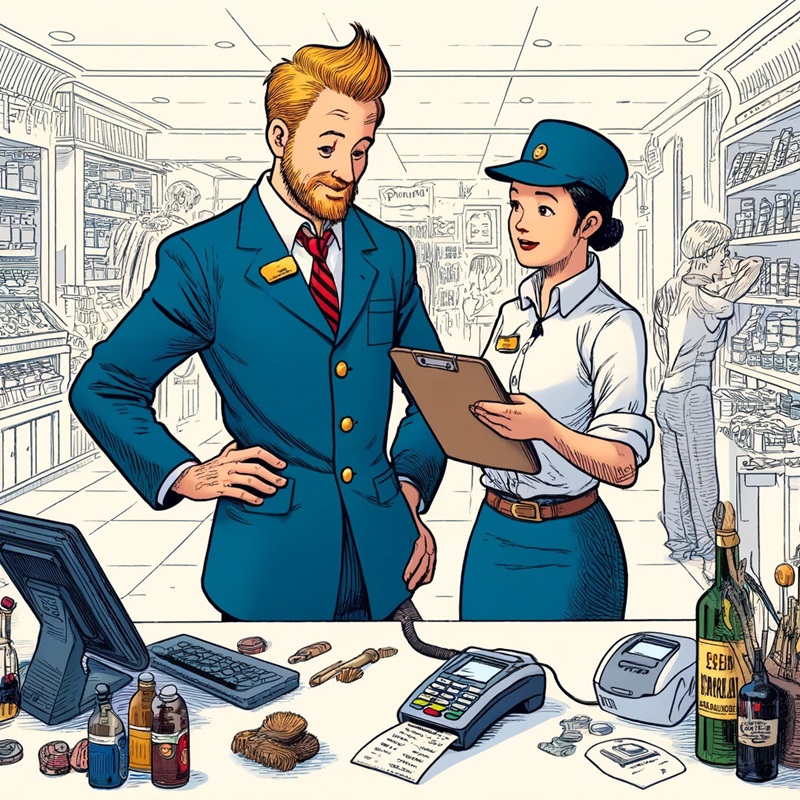Restaurant & Hospitality
The restaurant and hospitality industry is vast, encompassing a diverse array of sub-industries such as bars, hotels, restaurants, and more. Each sub-industry comes with its unique set of operational challenges, and as a result, the adoption of Point-of-Sale (POS) systems and terminals has become increasingly important. This article delves into the various sub-industries within the restaurant and hospitality sector that utilize POS solutions and examines the significance of these systems in streamlining operations and enhancing customer experiences.
Restaurants
Restaurants, from fine dining establishments to fast-food chains, benefit immensely from the use of advanced POS systems. These systems enable efficient order management, inventory tracking, menu customization, and employee scheduling. Additionally, POS solutions help restaurant owners analyze sales data and customer preferences, allowing them to make informed decisions and tailor their offerings accordingly. Overall, POS systems play a crucial role in streamlining restaurant operations and improving the overall dining experience for customers.
Bars and Nightclubs
Bars and nightclubs require POS systems that can handle the fast-paced nature of the business, including efficient order processing and open tab management. With age verification features, inventory tracking, and detailed sales reporting, POS solutions have become indispensable tools for bar and nightclub owners. By employing a POS system tailored to the unique demands of the nightlife industry, these establishments can optimize their operations, increase customer satisfaction, and ultimately, boost their bottom line.
Hotels
The hotel industry relies on comprehensive POS systems to manage a wide range of services, from check-in and check-out procedures to room service and guest billing. POS solutions for hotels often integrate with other property management systems, helping hoteliers streamline their operations and provide seamless experiences for their guests. The use of POS systems in hotels not only improves staff efficiency but also enhances the overall guest experience, contributing to increased customer loyalty and positive reviews.
Catering and Event Management
Catering and event management businesses face unique challenges, such as managing large-scale events with varying menu options, coordinating staff, and ensuring timely delivery of food and beverages. POS systems for this sub-industry must be adaptable and scalable, offering features such as menu customization, inventory management, and detailed reporting. By implementing a robust POS solution, catering and event management companies can improve their operational efficiency, ultimately leading to more successful events and satisfied clients.
Food Trucks and Pop-Up Restaurants
Food trucks and pop-up restaurants may be smaller in scale, but they still require efficient POS systems to manage their operations. Mobile POS solutions offer features such as quick order processing, inventory tracking, and integration with mobile payment platforms, allowing these businesses to thrive in a competitive market. By leveraging POS technology, food trucks and pop-up restaurants can capitalize on their unique business models while streamlining their operations and enhancing the customer experience.
The diverse sub-industries within the restaurant and hospitality sector each face distinct operational challenges. The implementation of tailored POS systems and terminals across these sub-industries has become crucial for streamlining operations, improving efficiency, and ultimately, enhancing customer experiences. As technology continues to evolve, the significance of POS solutions in the restaurant and hospitality industry will only grow, playing a pivotal role in the success and growth of businesses across this vast landscape.
Download our Vendor Selection White Paper
This white paper aims to guide businesses through the process of selecting a payment terminal vendor by examining essential considerations such as security features, integration capabilities, user experience, and cost implications.

